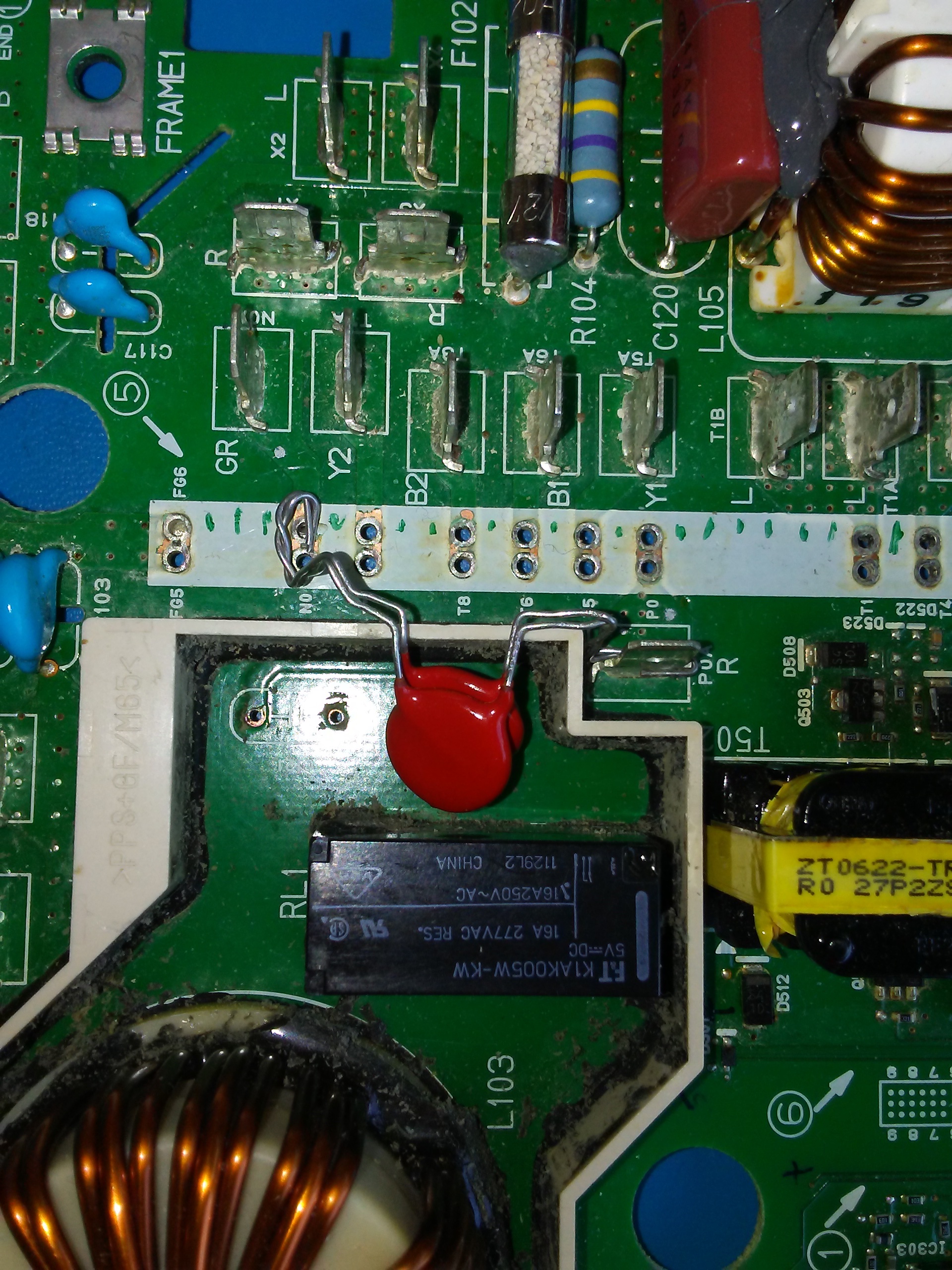kiev said:
Maybe something is blowing the MCU fuse first and that causes a chain reaction to blow the snubber caps--but what can this thing be...?
I've had a few false starts answering this question (yet again).
Here's all I can come up with today. Charrger is charging at near full current. MCU fuse is somehow not vibration resistant, and under warming from the charge current, it lets go. All the charge current pours into C115 (220 μF 450 V), and its voltage shoots up very fast; much faster than a battery ever would, and faster than the control circuit is designed for. It notices the over-voltage, and pulls back the current. It overshoots, as control circuits often do, meaning that it cuts the full bridge off completely. Or there is a special circuit to notice a severe overload, and it cuts off the full bridge.
Zero percent PWM. But there is still current in the inductors, with the full bridge open circuit one side, and C115 at maybe 400 V on the other side. The only path for the inductors to continue to dump whatever current they have left into C115 is via C121 and C122, our blue or surface mount friends that are not designed for this amount of current. The excess current blows them to smitherines, and the resultant arc finally discharges the flux from the inductors.
Mind you, I don't know how big these inductors that I'm talking about are. There are whoppers in the PFC circuit, sure, but maybe these aren't big enough to blow your nose. If the main output-side inductance is actually the leakage inductance of the transformers, then my theory is toast.
The answer would seem to be to beef up the peak current capability of those capacitors that keep blowing (and probably their voltage rating as well). That might cause something else to blow instead, but I suspect not.
@Kiev, would you consider beefier replacements to see how they go? But I don't know how to prove that you've thereby fixed it "for good".


































